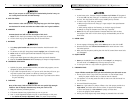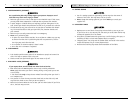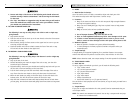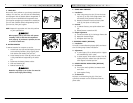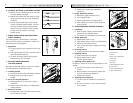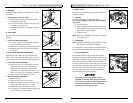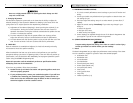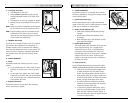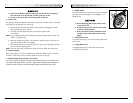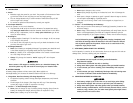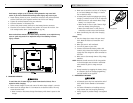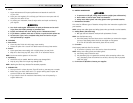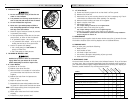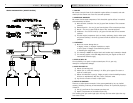
930570 Rev. C
XII. Maintenance
47
XII. Maintenance
930570 Rev. C
46
2. 14" Drive Wheels:
a) Elevate and securely support chair so that wheel is off the ground.
b) Release all air from tire.
c) Remove the four lug nuts securing wheel to hub (this is necessary only if tech-
nician desires to remove entire wheel assembly– not required).
d) Remove all bolts holding two halves of rim together.
e) Repair or replace inner tube.
f) Reassemble wheel rim.
Use a torque setting of 180 lbs.-in. to re-tighten bolts.
g) Re-secure wheel to hub using four lug nuts.
Use a torque setting of 240 lbs.-in. to re-tighten lug nuts.
h) Inflate tire to proper pressure level (listed on tire sidewall).
It is recommended to operate chair for 10-15 hours and then re-verify installation
torque of lug nuts at 240 lbs.-in.
G. MOTOR BRUSHES
You should have your supplier check the motor brushes every four (4) months for wear.
The brushes should be clean and shiny. Replace worn or blackened brushes.
H. ORDERING PARTS
When you order parts, provide the following:
1. Model of chair
2. Serial number of chair
3. Left hand or right hand control
4. Part number, description and quantity of parts you need.
5. State reason for replacement.
I. MAINTENANCE CHART
You should check the items on this chart at the indicated intervals. If any of the items
are loose, worn, bent or distorted, immediately have them checked and/or repaired by
your authorized Sunrise supplier. Frequent maintenance and servicing will improve per-
formance, extend wheelchair life, and help prevent injuries.
Charge Batteries
Check tires for proper inflation level
Check batteries for proper electrolyte level (wet cell only)
Check plugs and connectors for proper connections
Check all moving parts for wear
Inspect all nuts, bolts and fasteners for looseness or wear
Inspect upholstery for wear
Remove and inspect motor brushes
Servicing by authorized Supplier
CHECK...
✓
✓
✓
✓
✓
✓
✓
✓
✓
Quarterly
Annually
Monthly
Weekly
Daily
E. PNEUMATIC TIRES
1. Do not use this chair if any of the tires are
under- or over-inflated.
2. Low pressure in a tire may cause the chair to
veer to one side and result in loss of control.
3. An over-inflated tire may burst.
4. Never use a gas station pump to inflate a
tire. Such pumps provide air at high volume,
and may cause tire to burst.
1. Check for signs of wear and correct air pressure
in pneumatic tires weekly.
2. For best performance, inflate tires to the same
pressure level, as shown on the tire sidewall:
• 8" pneumatic casters - 30 to 40 psi
• 14" pneumatic drive wheels - 35 to 45 psi for
knubby tires and 25 psi for V-groove tires.
3. Caution: To prevent tire damage:
• Use a hand pump (or a low volume air
pump) to inflate tires.
• Use a tire gauge to check pressure.
F. TO REPAIR OR REPLACE A TIRE
Residual air pressure in tires can cause severe
injury. Make sure you release all air in tire
before attempting to service or repair tires.
1. 8" Caster Wheels:
a) Release all air from tire.
b) Remove caster wheel from fork.
c) Make sure there is no residual air in tire before
you remove bolts that hold the two rim halves
together.
d) Remove four bolts from rim. Separate two
halves of rim.
e) Repair or replace inner tube.
f) Reassemble the caster wheel; makesure the bear-
ing spacer is in place and all four bolts are secure.
NOTE– Use a torque setting of 240 inch-pounds when
tightening bolts.
g) Mount caster wheel onto fork. Install washers
correctly.
h) Inflate tire to proper pressure level.



